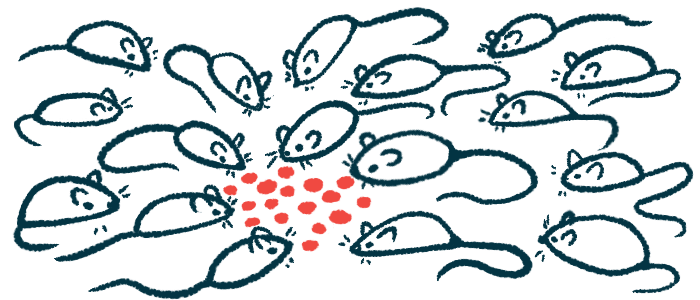Continuous low oxygen reverses motor symptoms in FA mice
Researchers tested a number of hypoxia regimens to assess effect on ataxia

Continuous exposure to low levels of oxygen, or hypoxia, prevented or rapidly reversed motor symptoms in a mouse model of Friedreich’s ataxia, a study suggested.
While a continuous mild hypoxia regimen also slowed the onset of motor symptoms, it didn’t reverse motor impairment. Intermittent hypoxia had a detrimental effect on the mice.
The researchers emphasized the need for further preclinical testing before proceeding to patients, despite the findings from the study, “Continuous, but not intermittent, regimens of hypoxia prevent and reverse ataxia in a murine model of Friedreich’s ataxia,” which was published in Human Molecular Genetics.
Frataxin is a protein that helps assemble clusters of iron and sulfur critical for the function of more than 60 proteins, including those needed for energy production within mitochondria, the cell’s power plants.
FA is marked by an inherited deficiency in frataxin, which reduces the activity of associated proteins. As a result, many biological functions are impaired, including with mitochondria, leading to the onset of ataxia — a lack of muscle control during voluntary movements.
Researchers at Massachusetts General Hospital (MGH) showed that continuously exposing an FA-induced mouse model to 11% oxygen, below the atmospheric level of 21% (hypoxia), boosted levels of iron-sulfur clusters and prevented ataxi’s onset. Cardiac disease was not reduced.
“Translating this regimen to humans has significant practical challenges as it would require a patient to permanently reside within a low oxygen environment,” the researchers wrote.
The MGH team tested seven hypoxia-based treatment regimens in an FA mouse model to identify which are safe and effective.
Testing effect of hypoxia regimens on FA symptoms
Mice treated with intermittent hypoxia, 16 hours at 11% followed by eight hours at 21% (Regimen 1), lived significantly shorter than mice continuously breathing 21% oxygen. While the onset of ataxia wasn’t affected by intermittent hypoxia, heart function was compromised.
For Regimen 2, intermittent hypoxia was then combined with PT2399 — a drug that blocks HIF-2alpha, a protein implicated in the process of making red blood cells (erythropoiesis) — to blunt the increase in red blood cells that had been deemed detrimental when combined with excess oxygen in tissues. PT2399 slowed the accelerated mortality in intermittent hypoxia alone and led to temporary benefits in motor function.
A milder chronic hypoxia regimen (Regimen 3), continuously exposing mice to 17% oxygen instead of 11%, resulted in small but significant increases in red blood cell levels with no detrimental effects on lifespan. The regimen had no impact on a heart involvement marker called Gdf15.
Mild hypoxia was sufficient to improve motor abilities 12 weeks after the onset of symptoms. Still, benefits didn’t extend to 15 weeks, “indicating that 17% [oxygen] acts to delay, but not altogether prevent ataxia,” the researchers noted.
As before, PT2399 was added to the mild hypoxia regimen (Regimen 4), which delayed the onset of ataxia but didn’t prevent late-stage ataxia. It didn’t affect lifespan or affect the heart involvement marker either.
To create systemic hypoxia (Regimen 5), anemia (low red blood cells) was induced by directed bleeding (phlebotomy) and an iron-deficient diet. However, anemia didn’t improve lifespan, ease ataxia or impact the heart involvement marker.
To mimic changes in the body due to hypoxia, the gene that encodes the iron-regulating hormone hepcidin was deleted from FA mice (Regimen 6). This led to iron accumulating in the heart, brain, and blood.
While there was no worsening of motor function with this regimen, these mice lived significantly shorter and had signs of heart damage.
Lastly, the researchers expanded their original regimen of continuous 11% oxygen, starting it when the disease is advanced to determine if hypoxia can reverse established ataxia (Regimen 7).
“Most patients are typically diagnosed only after they have presented with early signs and symptoms of ataxia,” the researchers noted.
After the appearance of motor symptoms under normal oxygen, exposure to continuous levels of 11% oxygen was sufficient to rapidly reverse motor symptoms. Lifespan and heart impairment were unaffected.
These data “lay an important groundwork in eventually translating hypoxia regimens into the clinic for FA patients,” the researchers wrote. “We emphasize the need for additional preclinical evaluation of hypoxia and hypoxia-inspired regimens before proceeding to testing in FA patients.”







